
As a massage therapist and movement specialist, my approach to program design for breast cancer patients is essentially the same as it is for everyone I work with: I strive to meet each client where they are in each moment. I work to understand their goals and to get a sense of their personal challenges. I construct my programming accordingly.
If you are working with a client with breast cancer, it is important to understand some of the side effects and common treatments they might be undergoing. Below I describe the effects of five different breast cancer treatments and offer suggestions for teachers and practitioners working with those clients. Breast cancer patients should consult with their doctor before taking on new movement and self-massage practices.
1. What is a Mastectomy and How can I Help?
Mastectomy is the surgical removal of one or both breasts, partially or completely, during the course of breast cancer treatment. A radical mastectomy used to be far more common and involved removing all of the breast and nipple as well as the pectoralis muscles and most of the lymph nodes of the underarm. There are modern techniques which attempt to save these tissues when possible.
I was startled when a surgeon casually referred to the pectoralis muscles as “expendable” while answering one of my questions, but our continued conversation helped me to understand our different perspectives. Breast surgeons have the primary goal of saving lives. Pristine mechanics of the neck, shoulder and scapula are understandably not the most significant concern in the O.R..
To say that a client who has had a mastectomy will likely come to you with compensatory movement patterns that could contribute to overuse, underuse, misuse and abuse of other tissues is obvious. Your mastectomy client may be challenged by excess tension in the head, neck, shoulders, trunk, hips, hands, feet and limbs (yes, that’s the whole body).
Self-massage on the Roll Model Therapy Balls might be helpful at this point. However, a good place to approach self-massage work is to use the therapy balls somewhere distal (away from) the surgical site. Consider using the original sized Yoga Tune Up® therapy balls on the feet, head or posterior neck. Introduce the therapy balls (and the parasympathetic nervous system stimulation they provide) to the body while avoiding direct contact with the breast and chest area.
You can also help your client/student to softly mobilize the ribs and intercostals with conscious thoracic breathing. Then try practicing the Rib Rock with the Coregeous® ball on the lower thoracic spine to help to gently re-calibrate a discombobulated respiratory diaphragm. Place the ball under the lower thoracic spine, hug the arms around the chest, and gently drop one side of the rib cage toward the ground, then the other, rocking slowly back and forth. After using the Coregeous ball, return to thoracic breathing to feel any changes in access to breath and rib cage mobility.
Eventually you could introduce self-massage on therapy balls to the low neck, lower back and upper back. Unless your client has lymphedema, in which case all this therapy ball work will probably just facilitate more lymphedema, which is not recommended. But do not rush your approach towards the most aggrieved soft tissues that remain.
2. What is Reconstruction and How can I Help?
There are a variety of options for patients who choose breast reconstruction after mastectomy or lumpectomy. This can involve surgical insertion of an implant at the time of surgery, or via tissue expanders that prepare the area for the implant over a series of post-operative procedures. Be cautious applying pressure to implants. As always, seek medical clearance.
Options to reconstruct using the patient’s own tissue (autologous or “flap” reconstructions) exist as well. Here the tissue is taken from donor sites in the abdomen, back, buttock or thigh and transplanted to the breast area. Supporting a client who has undergone a “flap” reconstruction involves careful consideration of not only the breast area, but the donor site as well.
Getting acclimated to navigating through the world with new mass[es] of either autologous tissue that’s been transplanted or synthetic tissue that’s been implanted, is not easy. Over time (and with the doctor’s approval), you may begin to implement the Roll Model Method® and Yoga Tune Up® recommendations above for mastectomy patients.
Eventually you may include very gentle compressive and cross-fiber forces with therapy balls at the sites of the surgical scars. Patients can do this both using Roll Model® Method Therapy Balls, or their own hands. It is important to slowly re-acclimatize the client to their own sense of touch, even in areas that seem to have lost sensation.
3. What is Prosthesis and How can I Help?
Prosthesis is an alternative to reconstruction where the patient can wear a breast form that fits into her bra. Some patients may choose to remove the prosthesis for movement and myofascial work, and some may not. It will be your job to be adaptable. All of the above recommendations still hold, as with synthetic implants, do not compress prosthesis directly.
4. What is Radiotherapy and How can I Help?
Radiation therapy uses high-energy rays to kill cancer cells. Breast cancer radiation therapy may be used to destroy any mutated cells that remain in the breast or axillary region after surgery. The effects of radiotherapy are cumulative, so you will need to check in with your client before any class or session.
After the third or fourth week of treatment, fatigue is common. There can also be an after-burn reaction that behaves much like a sunburn, transitioning from sensitive to itchy. This can make movement and clothing uncomfortable. A condition called moist desquamation can also occur. This results in blisters and breaks in the skin, and eventually leads to the skin peeling and sloughing off. If a reaction this severe occurs, this would likely cause a pause in radiation treatment and possibly a pause in your work with your client as well.
Use Roll Model® Method Therapy Balls with caution as complications with the skin can make touch uncomfortable. Clients who have undergone radiation therapy in the past may develop fibrosis, or a thickening and loss of elasticity of the skin of the treated area.
Caution and care should be taken with therapy ball work here, while cross-fiber friction at various depths may be helpful. Clients dealing with these side effects may benefit from a personal practice of down-regulating breath work, Sankalpa (mindset) practice, passively supported postures and yoga nidra. You could also include gentle exercises to explore and maintain range of motion.
5. What is Chemotherapy and How can I Help?
Chemotherapy is a treatment that uses one or more anti-cancer medications as part of a therapeutic regimen. It may be given with hopes for a curative effect, it may be intended to prolong life, or it may be used to provide palliative care (this is symptom management for patients with a terminal prognosis).
Given the detail I would love to provide for you to better understand the side effects of chemo, and therapeutic strategies that can be offered, I will save this topic for a future post. Be sure to tune in!
Liked this article? Read Suggestions from Breast Surgeons Part One: A Sankalpa Practice for Breast Cancer Patients
Go here for more information on the Roll Model Therapy Balls
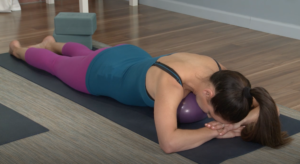


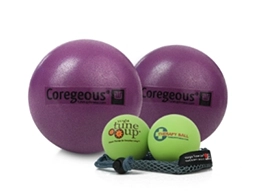
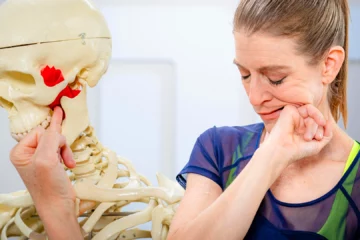
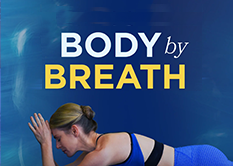





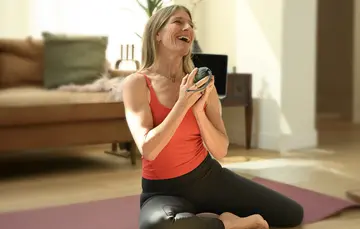

This was hugely informative. I’ve been highly uniformed of how to provide care in these contexts. Thank you for thoughtfully walking us through how to consider soft tissues and using tools such as the Yoga Tune Up Balls. I also found it valuable to think of beginning at the most distal parts of the body.
So important to have an informative article written about this topic so as women, we can support other women during this process. Women who have had a mastectomy can be going through emotional processes of feeling less feminine or become insecure about their new look – we must be empathic and be open to listen to their emotional journey and offer supporting tools. For a bodyworker, it is useful to have tools that can support women carry their bodies better during this process, improve breathing patterns, aid the lymphatic system during the healing process.
This article is really educational and will allow me to support the women concerned with much more knowledge and empathy.
This article is thorough and simplified, I really appreciate it. I deal with breast cancer patients with incredibly tight pecs, thanks for reminding me I can use tools like the coregeous ball on neighboring tissues to help them get a sense of openness. The advise to use down-regulating breath work to relax the tissues.
I currently work as a massage therapist and lymphatic therapist so I see patients at varying stages of there cancer rehab. I just finished a YTU teacher training and I appreciate how you outlined some cautions, considerations, and progressions I can use when teaching YTU techniques to this demographic.
Thank you for the overview of treatments and their impact on working with patients. Very helpful! I totally agree and find it beautiful that you recommend reacclimatizing clients to their own sense of touch even when they have lost sensation in the area. Very good! thank you!
The information in this article is very clear and easy to follow. I just love the idea to work on breath and Sankalpa when the options are limited.
LOVE LOVE LOVE this article!! Super helpful as a health care professional who works in cancer rehab; in our final session this series we did a therapy ball sequence for about 10mins following their daily workout and we did shoulder flexion range of motion to test prior to the rolling. Out of the whole 10min sequence (where we started in the feet and moved more proximal) we only did 2 minutes in the pecs and lats and 80% of the ladies had a significant improvement in their shoulder flexion; one lady was even able to get full range of motion 3 years post mastectomy. It was truly SO inspiring. Leading me to do a YTU workshop on breast cancer rehab and therapy balls this spring! Totally saving this post for ideas!!
Thanks for this complete information made very accessible to all. Just wondering as you mention not rolling on implants if this would apply to all women having any kind of breast implants, I suppose so. Would then gentle rolling with Coregous or at the wall be fine around the implant area (surely not on it)?
This is really helpful for working with my client, thank you! I am looking forward to read your next blogpost on this topic.
I am in remission of breast cancer and just finished all the treatment last year, totally connected to your article. I wish I practice Tuneup fitness sooner but it is never too late. Definitely sharing your knowledge with my friends and unfortunately Breast cancer touch too many of our lives.
Thanks so much for sharing this information as I have numerous friends who have had breast cancer. Their desire to live fully and vibrantly is so doable with attention to their individual needs. I will be referring back to your post and I look forward to any further posts you share on this topic.
This was very useful, thank you. It is so positive to know that there are things that we can offer to support all our clients with breast cancer, regardless of what treatment option they are undergoing. I appreciate how you have layed this out so practically.
This was so helpful. Thank you, I have a student and friend who has undergone breast cancer recently I and look forward to guiding her to greater health and mobility once she is ready to return to yoga.
As someone who works with bodies, it can be daunting when someone come up to me with their unique issue. This article has provided me with more insight on what to look out for when someone had gone through breast cancer treatments.
Thank you for this thorough explanation of different types of treatment/ interventions. The longer I practice (I’m also an RMT) the more I have clients that have cancer and are in remission. There’s a lot to take in consideration for home care and this is useful.
Great article! Your knowledge in this area is helpful I learned specifics of the options women choose after surgery. THank you! well done 🙂